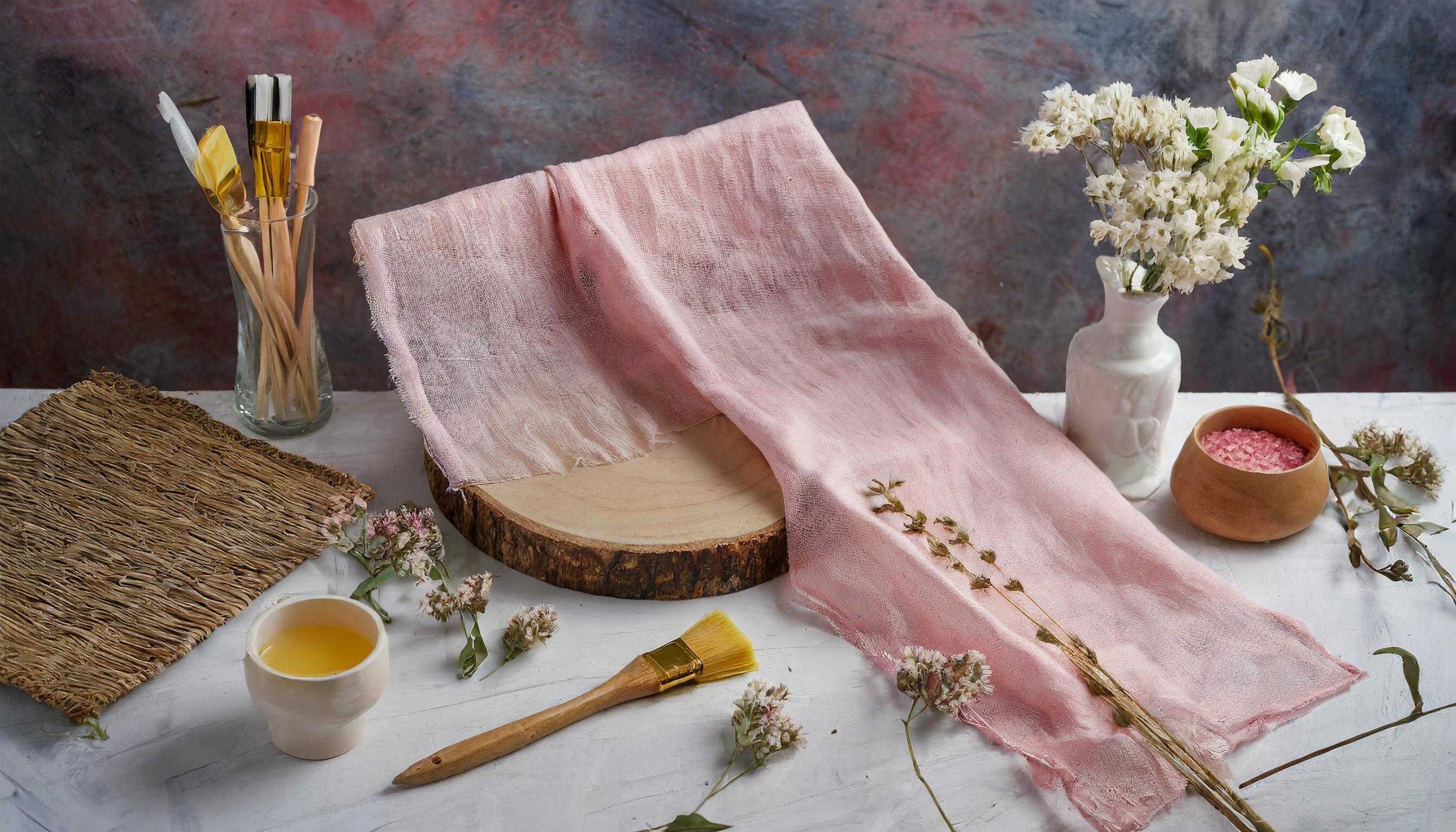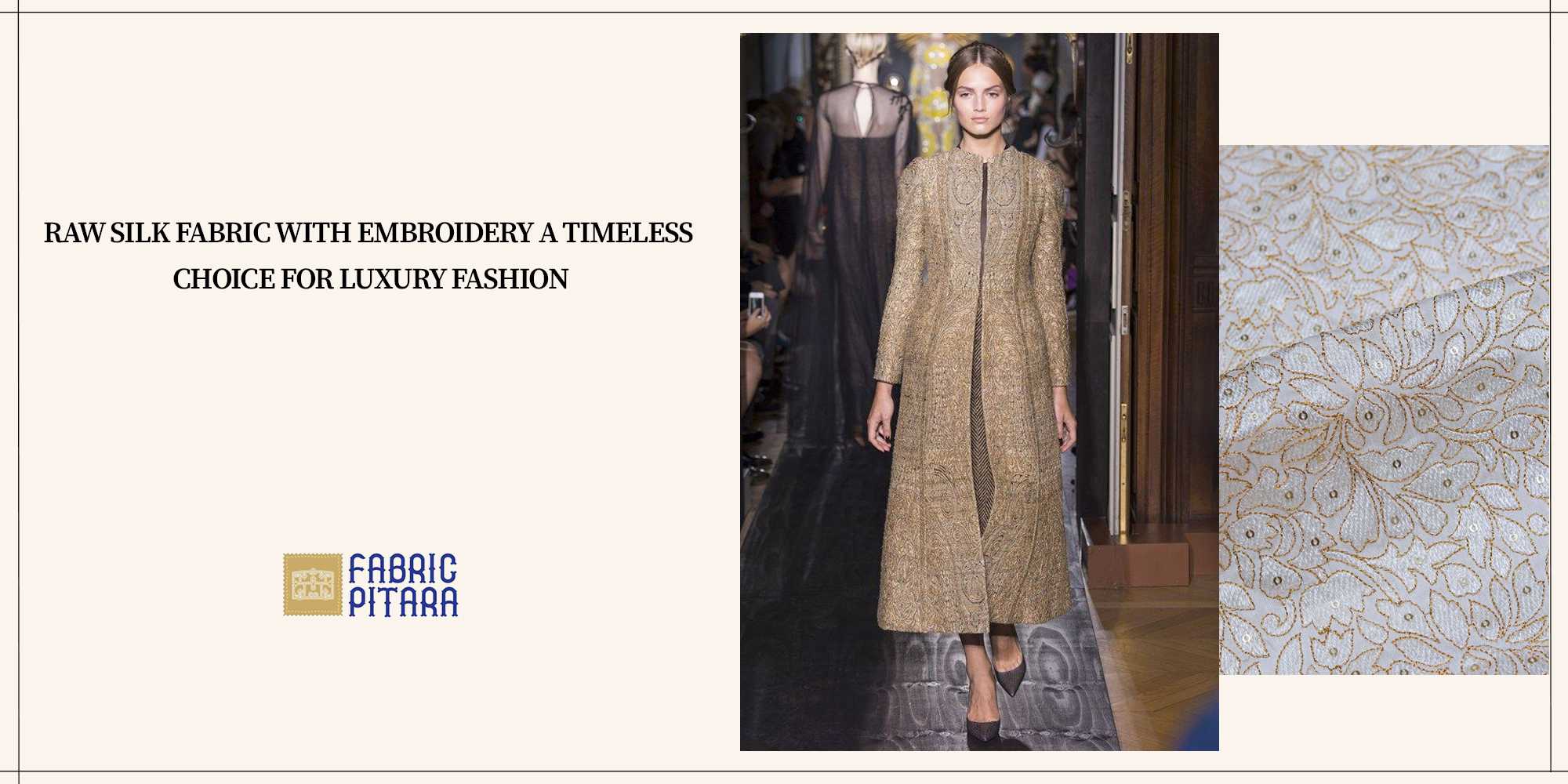In the realm of fashion design, few fabrics possess the timeless allure and versatility of blended muslin. From its humble origins in ancient India to its modern-day adaptation, blended muslin has evolved into a staple material for designers worldwide. With its rich history and unparalleled adaptability, this fabric stands as a testament to the enduring relationship between tradition and innovation in the fashion industry. Join us as we delve into the world of blended muslin, exploring its characteristics, applications, and why it has become an indispensable asset for every designer's toolkit.


Evolution of Blended Muslin
The evolution of muslin into blended muslin marks a significant development in the textile industry, combining traditional craftsmanship with modern innovation. Muslin, originally crafted from delicate cotton fibres, has a storied history dating back to ancient India, where it was prized for its softness and breathability. However, as demands for durability and versatility grew, textile manufacturers began experimenting with blending cotton with other fibres to enhance its properties.
Blended muslin emerged as a result of these experiments, incorporating additional fibres such as polyester, linen, silk, or other materials into the traditional cotton weave. This blending process aimed to augment the fabric's inherent qualities while addressing specific needs in various industries, including fashion design, home furnishings, and beyond.
The addition of synthetic fibres like polyester introduced a new level of durability to muslin, making it more resistant to tearing, fraying, and everyday wear and tear. This enhancement proved invaluable to designers seeking fabrics that could withstand the rigours of modern life without sacrificing comfort or style.
How Blended Muslin is Made
Blended muslin undergoes a meticulous manufacturing process that involves blending different fibres and weaving them into a cohesive fabric. This process combines traditional craftsmanship with modern technology to create a fabric that embodies the best qualities of its constituent fibres:
Fibre Selection- The first step in making blended muslin is selecting the fibres that will be blended with cotton to create the desired fabric. Common fibres used in blending include polyester, linen, silk, or other synthetic materials. Each fibre brings its unique properties to the blend, whether it's enhancing durability, adding texture, or improving drape.
Blending Process- Once the fibres are selected, they undergo a blending process to ensure uniformity and consistency in the final fabric. Blending can be done using various techniques, including carding, combing, or air-jet spinning, depending on the desired blend ratio and characteristics of the final fabric.
During blending, the fibres are mixed to create a homogeneous blend that will be woven into the muslin fabric. The blending process is crucial for ensuring that each fibre is evenly distributed throughout the fabric, resulting in a fabric with consistent properties and performance.
Weaving- After blending, the fibres are ready to be woven into muslin fabric using traditional weaving techniques. The weaving process involves interlacing the warp and weft threads to create a stable fabric structure. Depending on the desired texture and appearance, different weaving patterns may be used, such as plain weave, twill weave, or satin weave.
Blended muslin can be woven in various weights and densities, ranging from lightweight, sheer fabrics to heavier, more substantial textiles. The choice of weave pattern and fabric weight depends on the intended use of the fabric, whether it's for clothing, accessories, or home furnishings.
Finishing- Once the fabric is woven, it undergoes finishing processes to enhance its appearance, texture, and performance. Finishing techniques may include washing, dyeing, printing, or applying special treatments to achieve specific effects.
For example, blended muslin may undergo a softening treatment to improve its hand feel and drape, making it more comfortable to wear. It may also be subjected to dyeing or printing processes to add colour and pattern to the fabric, further enhancing its aesthetic appeal.
Quality Control- Throughout the manufacturing process, stringent quality control measures are implemented to ensure that the blended muslin meets industry standards for durability, colourfastness, and overall quality. Samples of the fabric are tested for strength, shrinkage, and other performance metrics to verify compliance with specifications.
Sustainable Practices- Many manufacturers of blended muslin are increasingly adopting sustainable practices in their production processes. This may include using eco-friendly dyes and chemicals, minimizing water and energy consumption, and implementing recycling and waste reduction initiatives to reduce the environmental impact of production.
Characteristics of Blended Muslin
Blended muslin boasts a unique set of characteristics that set it apart as a versatile and desirable fabric for various applications. Combining the best qualities of its constituent fibres, blended muslin offers a blend of durability, versatility, and comfort that makes it a favourite among designers and consumers alike:
Durability- One of the standout features of blended muslin is its enhanced durability compared to traditional muslin. By incorporating synthetic fibres like polyester into the cotton weave, blended muslin becomes more resistant to tearing, fraying, and general wear and tear. This increased durability makes blended muslin suitable for a wide range of applications, from clothing and accessories to home furnishings, where longevity is essential.
Versatility- Blended muslin's versatility is another key characteristic that makes it a go-to fabric for designers. With the ability to blend seamlessly with different fibres, including linen, silk, or polyester, blended muslin can adapt to a variety of design requirements and aesthetic preferences. Whether it's creating lightweight summer garments, structured jackets, or elegant drapery, blended muslin offers endless possibilities for creativity and experimentation.
Breathability- Despite its enhanced durability, blended muslin maintains excellent breathability, thanks to its natural cotton content. This breathability ensures comfort even in warm climates or during physical activity, making blended muslin an ideal choice for clothing worn in diverse weather conditions. Whether it's a breezy summer dress or a cosy winter scarf, blended muslin provides year-round comfort without compromising on style or functionality.
Texture and Drape- Blended muslin's texture and drape are influenced by the specific fibres blended with cotton during the manufacturing process. Blending linen fibres, for example, can add a subtle texture to the fabric, giving it a slightly rustic or vintage appeal. On the other hand, blending silk fibres results in a luxurious fabric with a smooth, silky texture and exceptional drape, perfect for creating flowing garments or elegant drapery.
Colour Retention- Blended muslin exhibits excellent colour retention properties, allowing it to retain vibrant hues and patterns even after repeated washing or exposure to sunlight. This makes blended muslin an excellent choice for garments and home textiles that require long-lasting colour vibrancy, ensuring that they remain to look fresh and vibrant for years to come.
Fashion trends featuring blended muslin
Fashion designers and enthusiasts alike have embraced blended muslin for its versatility, durability, and luxurious feel, leading to its prominence in various fashion trends and collections. From minimalist silhouettes to intricate draping techniques, blended muslin continues to inspire innovative designs and redefine contemporary fashion aesthetics:
Minimalist Silhouettes- Blended muslin's lightweight and breathable nature makes it an ideal choice for minimalist silhouettes characterized by clean lines and understated elegance. Designers often opt for blended muslin fabrics in neutral tones or subtle prints to create effortlessly chic garments that exude sophistication and refinement. Whether it's a tailored shirt dress, a flowing maxi skirt, or a relaxed-fit jumpsuit, blended muslin adds a touch of understated luxury to minimalist ensembles.
Draped and Gathered Styles- Blended muslin's exceptional drape and fluidity lend themselves perfectly to draped and gathered styles that accentuate the body's natural curves. Designers employ innovative draping techniques to create voluminous folds, cascading ruffles, and asymmetrical hemlines that add drama and movement to garments. Blended muslin's ability to hold shape while maintaining a soft, lightweight feel makes it a favourite choice for creating dynamic silhouettes that command attention on the runway and beyond.
Bohemian-Inspired Designs- The bohemian aesthetic, characterized by free-spiritedness and eclectic styling, finds a natural ally in blended muslin fabrics. Designers draw inspiration from nature and cultural influences to create bohemian-inspired designs featuring flowing maxi dresses, embroidered tunics, and billowy blouses crafted from lightweight muslin blends. Earthy tones, floral motifs, and intricate embellishments further enhance the bohemian vibe, evoking a sense of wanderlust and adventure in the wearer.
Athleisure Wear- Blended muslin's versatility extends beyond traditional fashion realms into the realm of athleisure wear, where comfort meets style. Designers combine blended muslin with performance fabrics such as spandex or elastane to create activewear pieces that offer freedom of movement, moisture-wicking properties, and breathability. Whether it's yoga leggings, sports bras, or lightweight hoodies, blended muslin's softness and stretch make it a popular choice for activewear that seamlessly transitions from the gym to the streets.
Conclusion
In conclusion, blended muslin stands as a timeless fabric cherished by designers and consumers alike for its versatility, durability, and luxurious feel. From its humble origins in ancient India to its modern adaptation, blended muslin has evolved into a staple material in the fashion industry, offering endless possibilities for creativity and expression. Its ability to blend seamlessly with different fibres, coupled with its exceptional drape and breathability, makes it a go-to choice for a wide range of applications, from minimalist silhouettes to bohemian-inspired designs and sustainable fashion collections.







